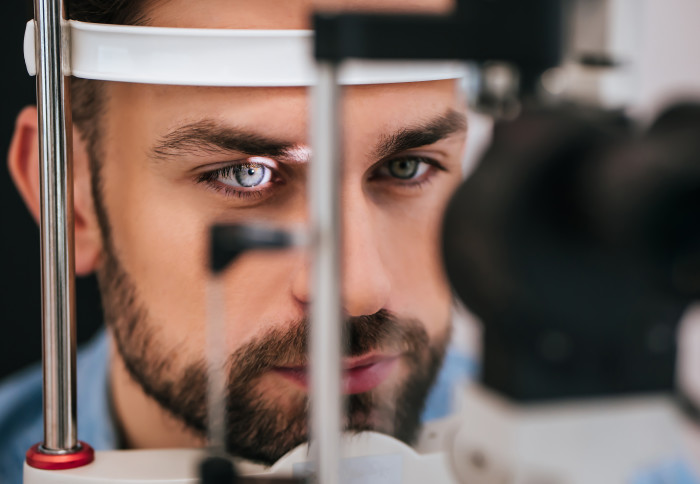Predicting Geographic Atrophy with DARC AI Biomarker

A new Imperial study finds that DARC technology can be used to identify dry, age-related macular degeneration.
The study, led by Professor Francesca Cordeiro from the Department of Surgery and Cancer, shows that DARC technology is able to identify eyes with rapidly enlarging atrophy up to 36 months earlier than other methods. It is hoped that this technology can help advance the development of new treatments for this catastrophically, blinding disease.
Age-related macular degeneration (AMD) is the commonest cause of blindness in over-55s affecting 700,000 in the UK, 11 million in the US, and is estimated to double in the next 25 years. Although the wet form of AMD is treatable, 90% is of the “dry” type, of which Geographic Atrophy is the advanced, currently untreatable form.
A recognised challenge in identifying Geographic Atrophy early enough to avoid any vision loss is a lack of meaningful disease activity measures and predictors of disease. This has meant that new potential therapies for Geographic Atrophy need long and expensive trials. By using DARC technology, Geographic Atrophy can be identified early enough to avoid any vision loss.
DARC is a method that allows the visualisation of sick and dying cells on the retina as “WHITE SPOTS” when a picture is taken of the retina. Clinical trials have shown that these DARC spots indicate disease activity accurately. This has been done using artificial intelligence algorithms to rigorously count and assess the DARC spots. Using DARC AI counts, DARC has recently been shown to predict glaucoma progression and new lesions of wet AMD.
This new study, published in Progress and Retinal Eye Research, describes a group of patients with pre-existing Geographic Atrophy, who were assessed once with DARC and were then followed up 36 months later with regular OCT imaging when they came for review.
The findings show that not only could DARC predict retinal areas that would lead to GA in the future but, importantly, the level of DARC activity was able to predict the extent and rapid growth of large areas of new atrophy.
Speaking about the study, Professor Cordeiro said: “These results are very promising as they show DARC could be used as a biomarker when combined with the AI-aided algorithm in this blinding disease where we urgently need new treatments. Importantly, what that means was DARC was able to predict new Geographic Atrophy up to 36 months in advance of it occurring and this is huge - it means that DARC activity can guide the clinician into treating more intensively those patients at high risk of rapidly expanding GA.”
The biomarker DARC was been developed by Professor M Francesca Cordeiro’s groups at Imperial College London and University College London, through Wellcome Trust funding.
DARC technology has recently been combined with artificial intelligence and is now being commercialised through Novai Ltd, a newly formed company actively looking for investment.
Cordeiro MF, Hill D, Patel R, Corazza P, Maddison J, Younis S. Detecting retinal cell stress and apoptosis with DARC: Progression from lab to clinic. Prog Retin Eye Res. 2021 Jun 5:100976. doi: 10.1016/j.preteyeres.2021.100976.
Article supporters
Article text (excluding photos or graphics) © Imperial College London.
Photos and graphics subject to third party copyright used with permission or © Imperial College London.
Reporter
Benjie Coleman
Department of Surgery & Cancer